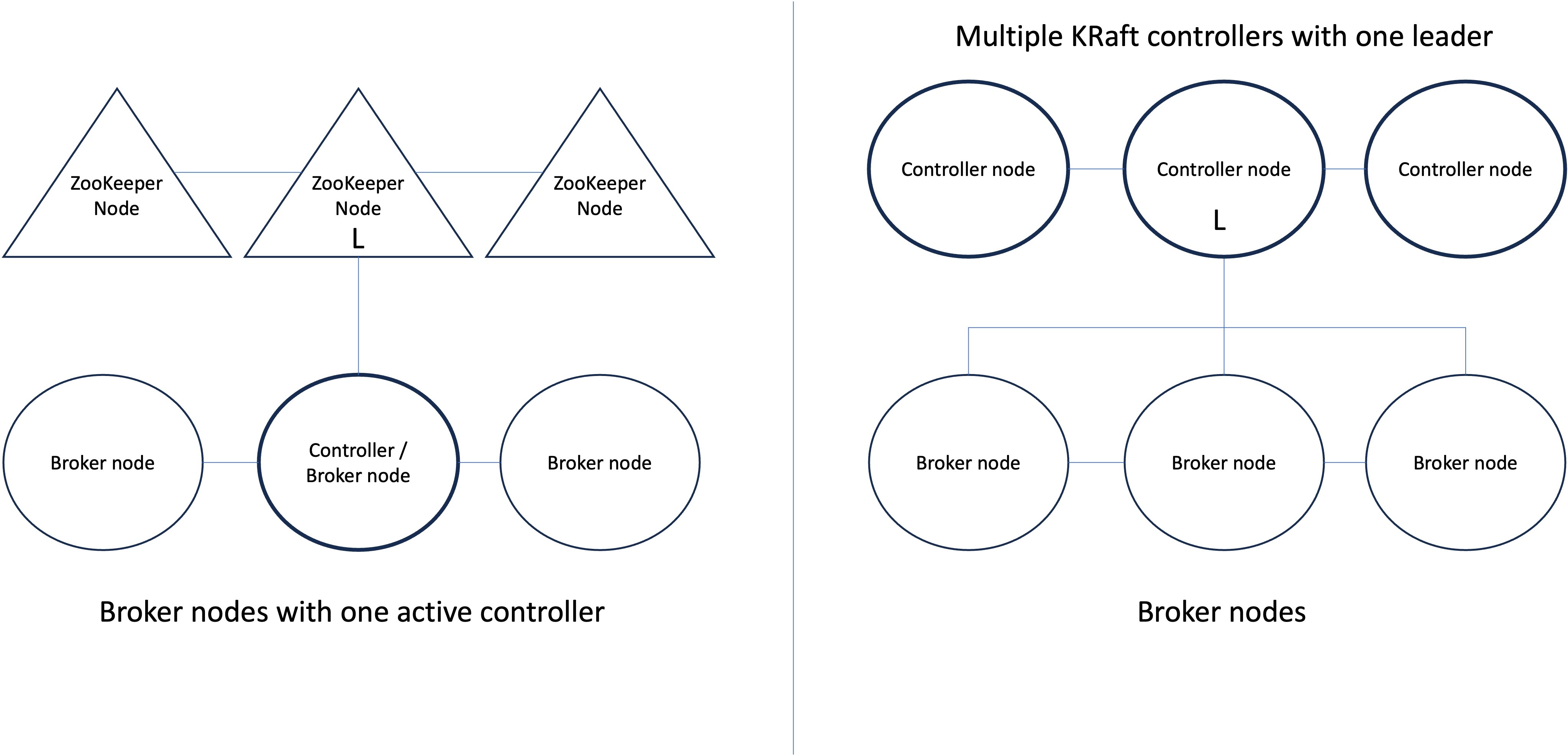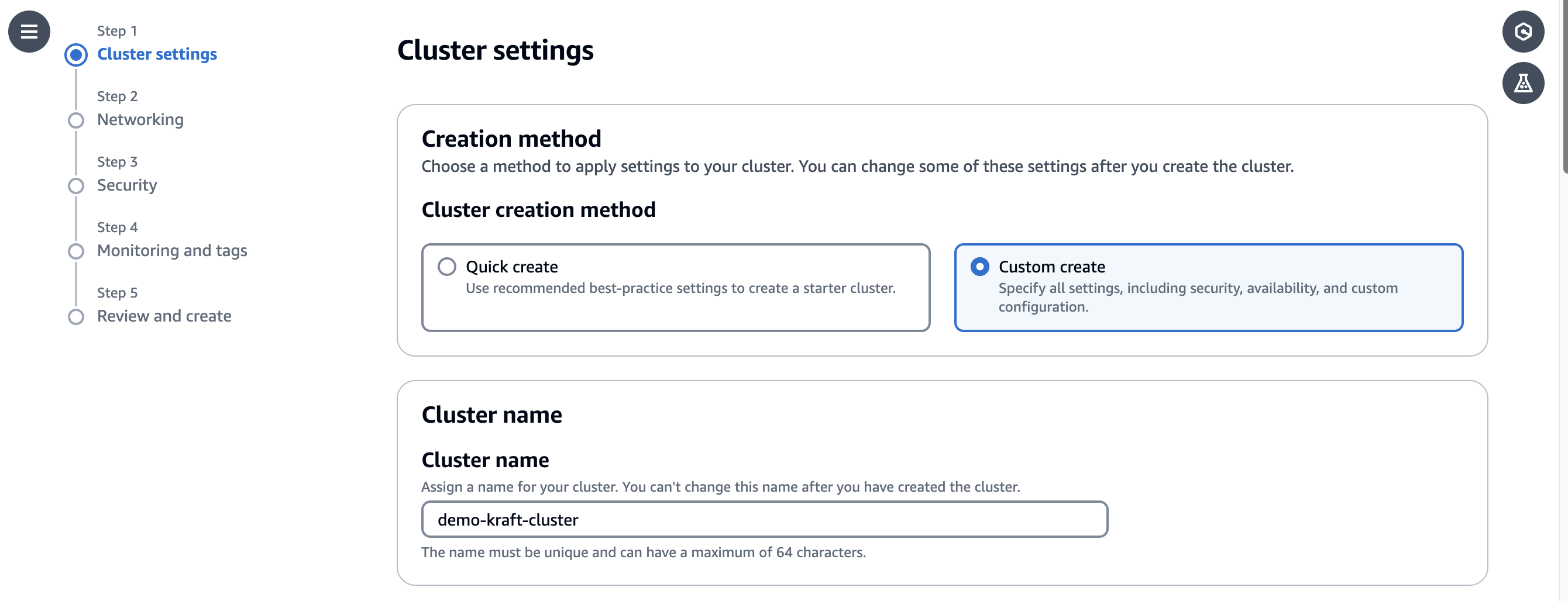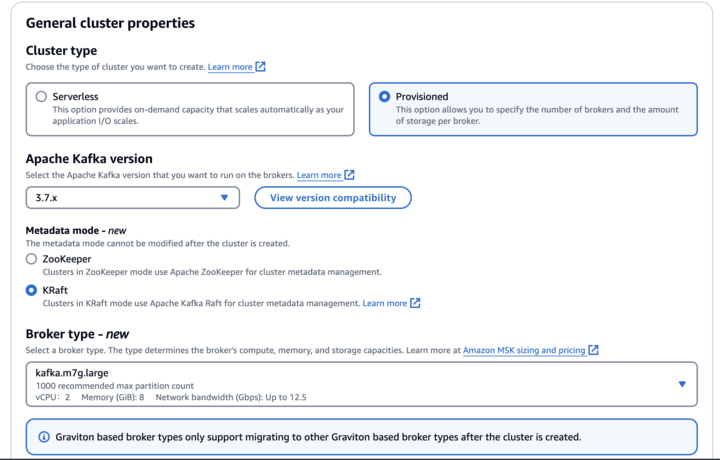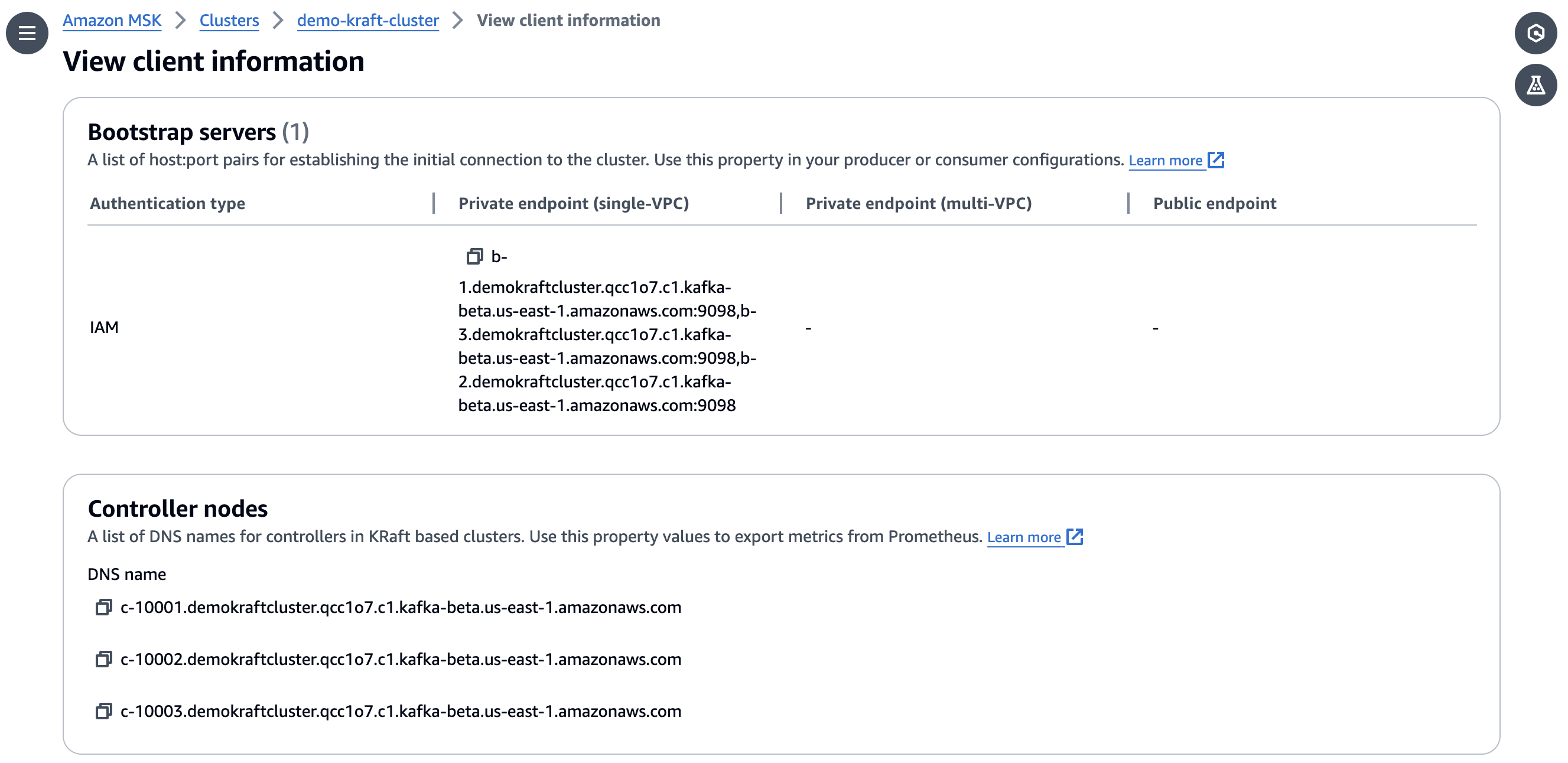Organizations are adopting Apache Kafka and Amazon Managed Streaming for Apache Kafka (Amazon MSK) to capture and analyze data in real time. Amazon MSK helps you build and run production applications on Apache Kafka without needing Kafka infrastructure management expertise or having to deal with the complex overhead associated with setting up and running Apache Kafka on your own. Since its inception, Apache Kafka has depended on Apache Zookeeper for storing and replicating the metadata of Kafka brokers and topics. Starting from Apache Kafka version 3.3, the Kafka community has adopted KRaft (Apache Kafka on Raft), a consensus protocol, to replace Kafka’s dependency on ZooKeeper for metadata management. In the future, the Apache Kafka community plans to remove the ZooKeeper mode entirely.
Today, we’re excited to launch support for KRaft on new clusters on Amazon MSK starting from version 3.7. In this post, we walk you through some details around how KRaft mode helps over the ZooKeeper approach. We also guide you through the process of creating MSK clusters with KRaft mode and how to connect your application to MSK clusters with KRaft mode.
Why was ZooKeeper replaced with KRaft mode
The traditional Kafka architecture relies on ZooKeeper as the authoritative source for cluster metadata. Read and write access to metadata in ZooKeeper is funneled through a single Kafka controller. For clusters with a large number of partitions, this architecture can create a bottleneck during scenarios such as an uncontrolled broker shutdown or controller failover, due to a single-controller approach.
KRaft mode addresses these limitations by managing metadata within the Kafka cluster itself. Instead of relying on a separate ZooKeeper cluster, KRaft mode stores and replicates the cluster metadata across multiple Kafka controller nodes, forming a metadata quorum. The KRaft controller nodes comprise a Raft quorum that manages the Kafka metadata log. By distributing the metadata management responsibilities across multiple controller nodes, KRaft mode improves recovery time for scenarios such as uncontrolled broker shutdown or controller failover. For more details on KRaft mode and its implementation, refer to the KIP-500: Replace ZooKeeper with a Self-Managed Metadata Quorum.
The following figure compares the three-node MSK cluster architecture with ZooKeeper vs. KRaft mode.

Amazon MSK with KRaft mode
Until now, Amazon MSK has supported Kafka clusters that rely on ZooKeeper for metadata management. One of the key benefits of Amazon MSK is that it handles the complexity of setting up and managing the ZooKeeper cluster at no additional cost. Many organizations use Amazon MSK to run large, business-critical streaming applications that require splitting their traffic across thousands of partitions. As the size of a Kafka cluster grows, the amount of metadata generated within the cluster increases proportionally to the number of partitions.
Two key properties govern the number of partitions a Kafka cluster can support: the per-node partition count limit and the cluster-wide partition limit. As mentioned earlier, the metadata management system based on ZooKeeper imposed a bottleneck on the cluster-wide partition limitation in Apache Kafka. However, with the introduction of KRaft mode in Amazon MSK starting with version 3.7, Amazon MSK now enables the creation of clusters with up to 60 brokers vs. the default quota of 30 brokers in ZooKeeper mode. Kafka’s scalability still fundamentally relies on expanding the cluster by adding more nodes to increase overall capacity. Consequently, the cluster-wide partition limit continues to define the upper bounds of scalability within the Kafka system, because it determines the maximum number of partitions that can be distributed across the available nodes. Amazon MSK manages the KRaft controller nodes at no additional cost.
Create and access an MSK cluster with KRaft mode
Complete the following steps to configure an MSK cluster with KRaft mode:
- On the Amazon MSK console, choose Clusters in the navigation pane.
- Choose Create cluster.
- For Cluster creation method, select Custom create.
- For Cluster name, enter a name.

- For Cluster type¸ select Provisioned.
- For Apache Kafka version, choose 3.7.x.
- For Metadata mode, select KRaft.

- Leave the other settings as default and choose Create cluster.
When the cluster creation is successful, you can navigate to the cluster and choose View client integration information, which will provide details about the cluster bootstrap servers.

Adapt your client applications and tools for accessing MSK clusters with KRaft mode
With the adoption of KRaft mode in Amazon MSK, customers using client applications and tools that connect to ZooKeeper to interact with MSK clusters will need to update them to reflect the removal of ZooKeeper from the architecture. Starting with version 1.0, Kafka introduced the ability for admin tools to use the bootstrap servers (brokers) as input parameters instead of a ZooKeeper connection string, and started deprecating ZooKeeper connection strings starting with version 2.5. This change was part of the efforts to decouple Kafka from ZooKeeper and pave the way for its eventual replacement with KRaft mode for metadata management. Instead of specifying the ZooKeeper connection string, clients will need to use the bootstrap.servers configuration option to connect directly to the Kafka brokers. The following table summarizes these changes.
| . | With Zookeeper | With KRaft |
| Client and Services | bootstrap.servers=broker:<port> or zookeeper.connect=zookeeper:2181 (deprecated) |
bootstrap.servers=broker:<port> |
| Admin Tools | kafka-topics --zookeeper zookeeper:2181 (deprecated) or kafka-topics —bootstrap-server broker:<port> … —command-config |
kafka-topics —bootstrap-server broker:<port> … —command-config |
Summary
In this post, we discussed how Amazon MSK has launched support for KRaft mode for metadata management. We also described how KRaft works and how it’s different from ZooKeeper.
To get started, create a new cluster with KRaft mode using the AWS Management Console, and refer to the Amazon MSK Developer Guide for more information.
About the author
 Kalyan Janaki is Senior Big Data & Analytics Specialist with Amazon Web Services. He helps customers architect and build highly scalable, performant, and secure cloud-based solutions on AWS.
Kalyan Janaki is Senior Big Data & Analytics Specialist with Amazon Web Services. He helps customers architect and build highly scalable, performant, and secure cloud-based solutions on AWS.
- SEO Powered Content & PR Distribution. Get Amplified Today.
- PlatoData.Network Vertical Generative Ai. Empower Yourself. Access Here.
- PlatoAiStream. Web3 Intelligence. Knowledge Amplified. Access Here.
- PlatoESG. Carbon, CleanTech, Energy, Environment, Solar, Waste Management. Access Here.
- PlatoHealth. Biotech and Clinical Trials Intelligence. Access Here.
- Source: https://aws.amazon.com/blogs/big-data/introducing-support-for-apache-kafka-on-raft-mode-kraft-with-amazon-msk-clusters/



